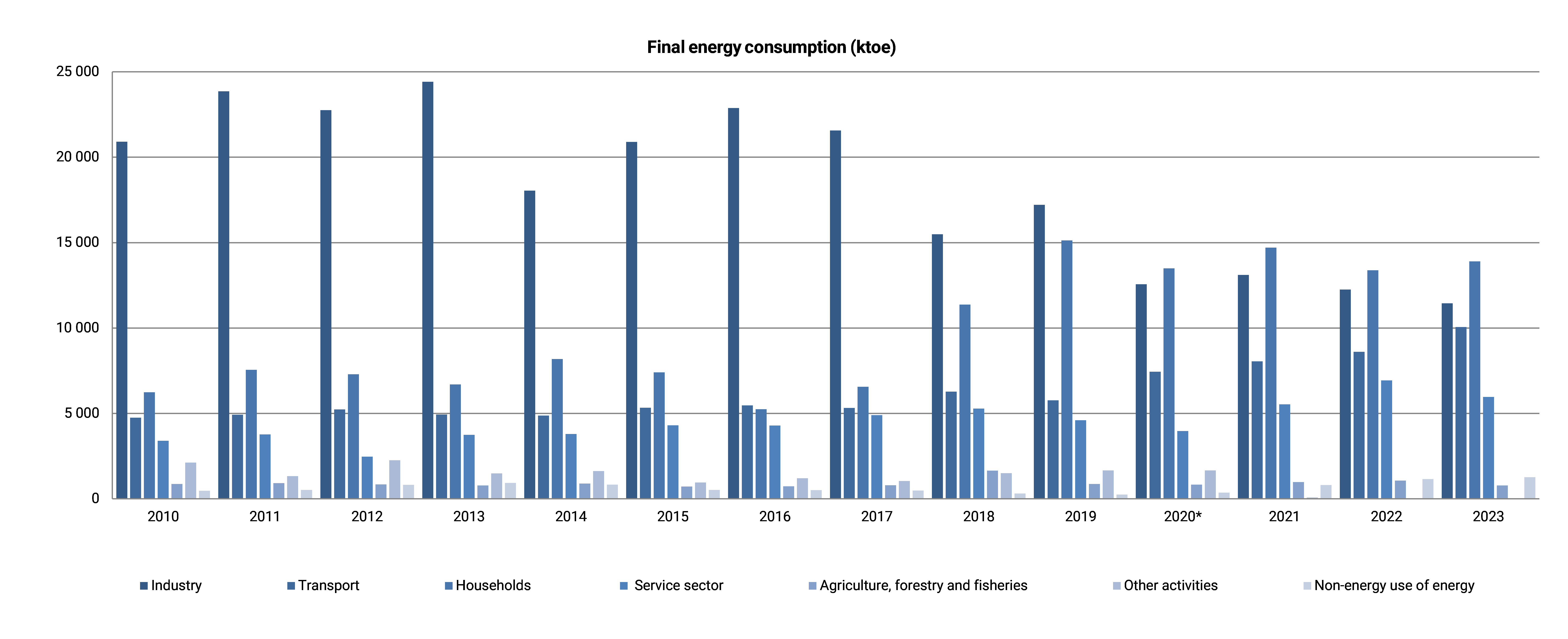Brief description:
This indicator describes the final consumption of energy supplied to the final consumer for use in all energy purposes, both in General and by main consumers (industry, transport, households, services and agriculture) in accordance with the international standard industrial classification of economic activities (ISIC).Final energyconsumption includes fuel used for energy purposes, except for fuel consumed by energy enterprises for conversion to other types of energy (electricity, heat, gas) and equipment operation.
Methodology:
The indicator is in accordance with the «Procedure for the formation of the fuel and energy balance and the estimation of some statistical indicators that characterize the energy sector», approved by order of the Chairman of the Committee on statistics of MNE of RK №160 dated 11 August 2016.The Bureau of National statistics of the Agency for Strategic planning and reforms of the Republic of Kazakhstan is the responsible state body for generating energy consumption data. Information is generated based on the results of national statistical observation in form 1-TEB (annual).
